Gas logs are artificial logs designed to mimic the appearance of real wood logs in a fireplace or gas fire pit. They are typically made from ceramic or refractory materials and are specifically designed for use with gas-burning appliances, such as gas fireplaces or gas log sets.
These logs are engineered to provide a realistic and natural-looking flame when used with a gas burner system. They come in various shapes, sizes, and styles to resemble different types of wood, such as oak, birch, or pine. Some gas logs even feature detailed textures and color variations to closely resemble real wood.
Gas logs offer several advantages over traditional wood-burning fireplaces:
- Convenience: Gas logs are incredibly convenient to use compared to hauling and storing real firewood. With gas logs, there’s no need to worry about chopping, stacking, or cleaning up ashes.
- Cleanliness: Gas logs produce minimal ash and soot, making them much cleaner than wood-burning fires. They also eliminate the need for chimney cleaning associated with wood-burning fireplaces.
- Control: Gas logs allow for precise control over the flame height and temperature with the use of a remote control or manual knob. This makes it easy to adjust the heat output and ambiance to suit your preferences.
- Safety: Gas logs eliminate the risks associated with flying sparks, embers, and chimney fires commonly associated with wood-burning fireplaces. They also produce fewer indoor air pollutants compared to burning wood.
Gas logs can be installed in an existing wood-burning fireplace or as part of a standalone gas fire pit. They are typically fueled by either natural gas or propane, with options for vented or vent-free installation depending on the setup of the fireplace and local building codes.
Overall, gas logs offer a convenient, clean, and safe alternative to traditional wood-burning fires, allowing homeowners to enjoy the ambiance of a cozy fire with minimal hassle and maintenance.

